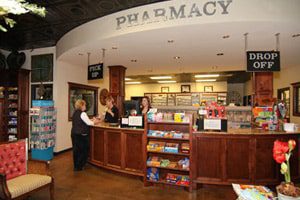
Medicines approved by the U.S. Food and Drug Administration (FDA) are the cause of about 100,000 deaths annually over what the agency describes as “adverse drug reactions” (ADRs). Another 2 million people in the United States also suffer from non-fatal adverse reactions tied to drugs that have been deemed safe by the FDA, according to […]
 Medicines approved by the U.S. Food and Drug Administration (FDA) are the cause of about 100,000 deaths annually over what the agency describes as “adverse drug reactions” (ADRs).
Medicines approved by the U.S. Food and Drug Administration (FDA) are the cause of about 100,000 deaths annually over what the agency describes as “adverse drug reactions” (ADRs).
Another 2 million people in the United States also suffer from non-fatal adverse reactions tied to drugs that have been deemed safe by the FDA, according to SmallGovTimes.com.
An ADR, explains SmallGovTimes.com, is a negative reaction resulting from taking a drug in accordance with either drug manufacturer guidelines or in accordance with physician instructions. Deaths associated with drug abuse or overdose are not included in ADR figures.
The FDA indicates that ADRs represent the fourth leading cause of death in the U.S. “ahead of pulmonary disease, diabetes, AIDS, pneumonia, accidents, and automobile deaths.”
The Lancet writes that “any substance that is capable of producing a therapeutic effect can also produce unwanted or adverse effects. The risk of such effects ranges from near zero … to high.” The World Health Organization (WHO) uses a definition that has been in place for 30 years and describes an adverse reaction as “a response to a drug that is noxious and unintended and occurs at doses normally used in man for the prophylaxis, diagnosis or therapy of disease, or for modification of physiological function.”
Adverse drug reactions had long been seen in patients who were 60 years of age and older; however, now, reports of adverse drug reactions are being seen with increasing frequency in people who are under the age of 50, according to Public Citizen. Adverse drug reactions are also the cause of some 1.5 million hospitalizations in the U.S. every year, which, according to Public Citizen, totals about 4,000 people diagnosed with an adverse drug reaction that is serious enough to warrant hospitalization every day in the United States.
A review of patients who had been hospitalized revealed that, in those who were seen in the hospital for an adverse drug reaction, that the ADR was not recognized in 57 percent of the cases by the attending physician at admission. Also, according to Public Citizen, a number of studies revealed that these admissions could have been prevented. Public Citizen also reported that almost 19 percent of medications prescribed prior to these admissions had been contraindicated. Other research also revealed that 88 percent of hospital admissions for ADRs in the elderly are preventable and that this demographic is four times likelier to need hospitalization for an ADR than the non-elderly.
Seniors are not the only group who at are risk for dangerous drug reactions following treatment with FDA-approved medications. About 2.09 percent of all hospitalizations for pediatric patients—children under the age of 19—were blamed on ADRs; 39 percent of these hospitalizations were for reactions that were deemed life threatening, according to Public Citizen.
Another three-quarters of a million people reportedly suffer from a serious adverse drug reaction after hospitalization annually, Reactions include cardiac arrhythmias, kidney failure, bleeding, and dangerously low blood pressure. These patients experienced a nearly two-fold risk of death when compared to other, comparable patients who had been hospitalized, but who did not suffer an ADR, according to Public Citizen. Sadly, almost 50 percent of these reactions are preventable, and include drugs that should not have ever been prescribed to patients with known allergies—and for which discussions of these allergies did not occur at admittance—as well as for patients who were prescribed drugs at very high doses that were not in accordance with patient weight and kidney function.


